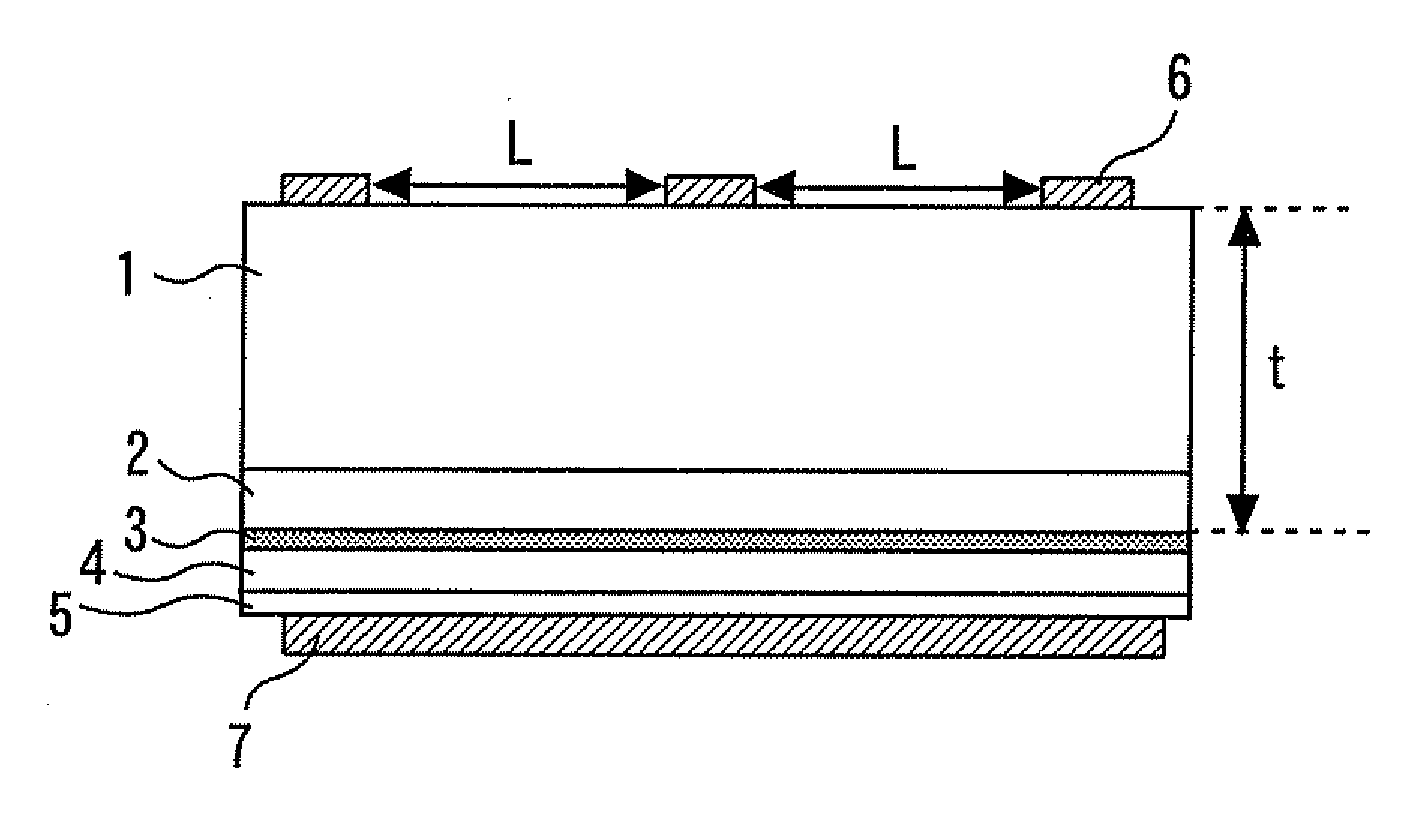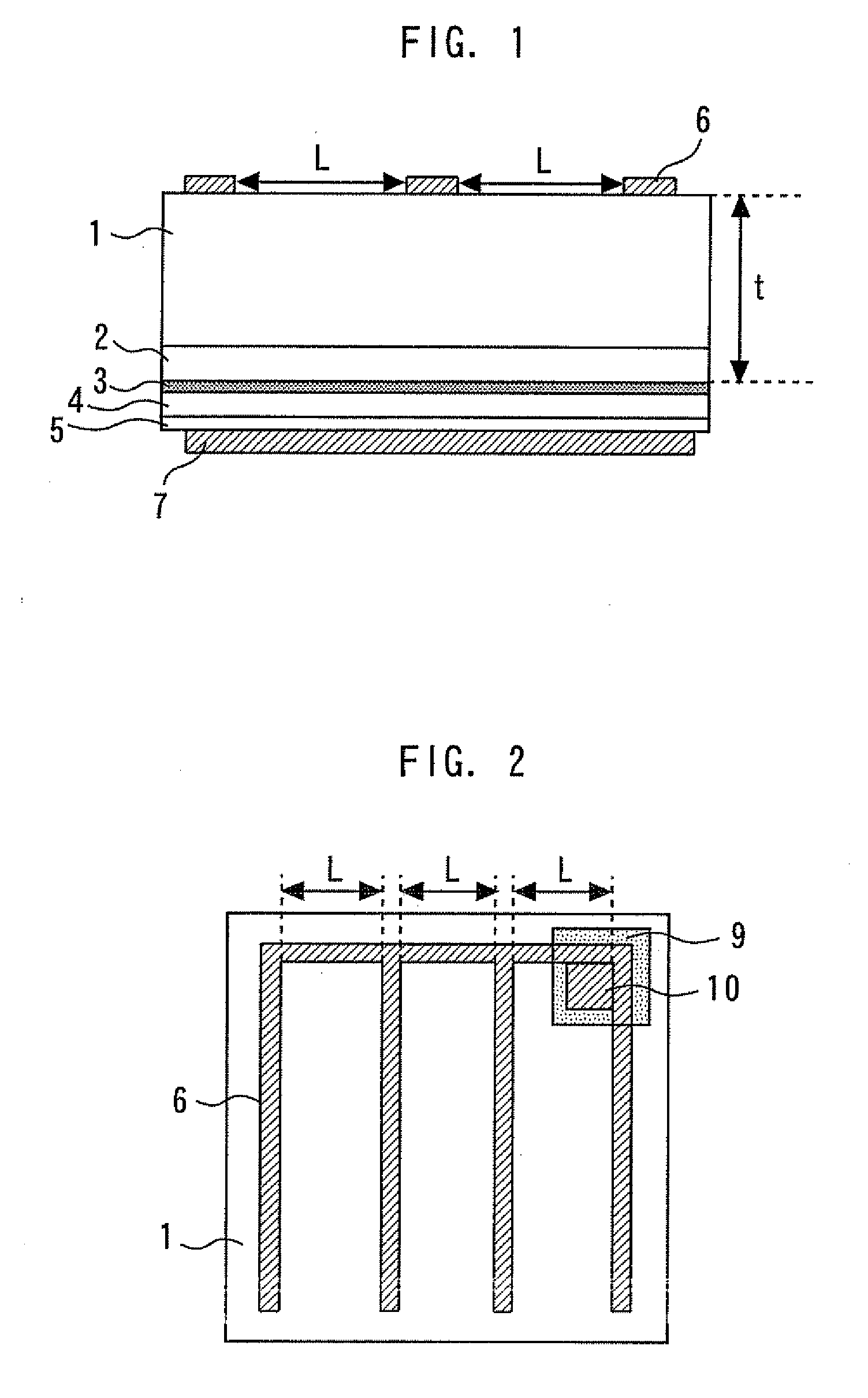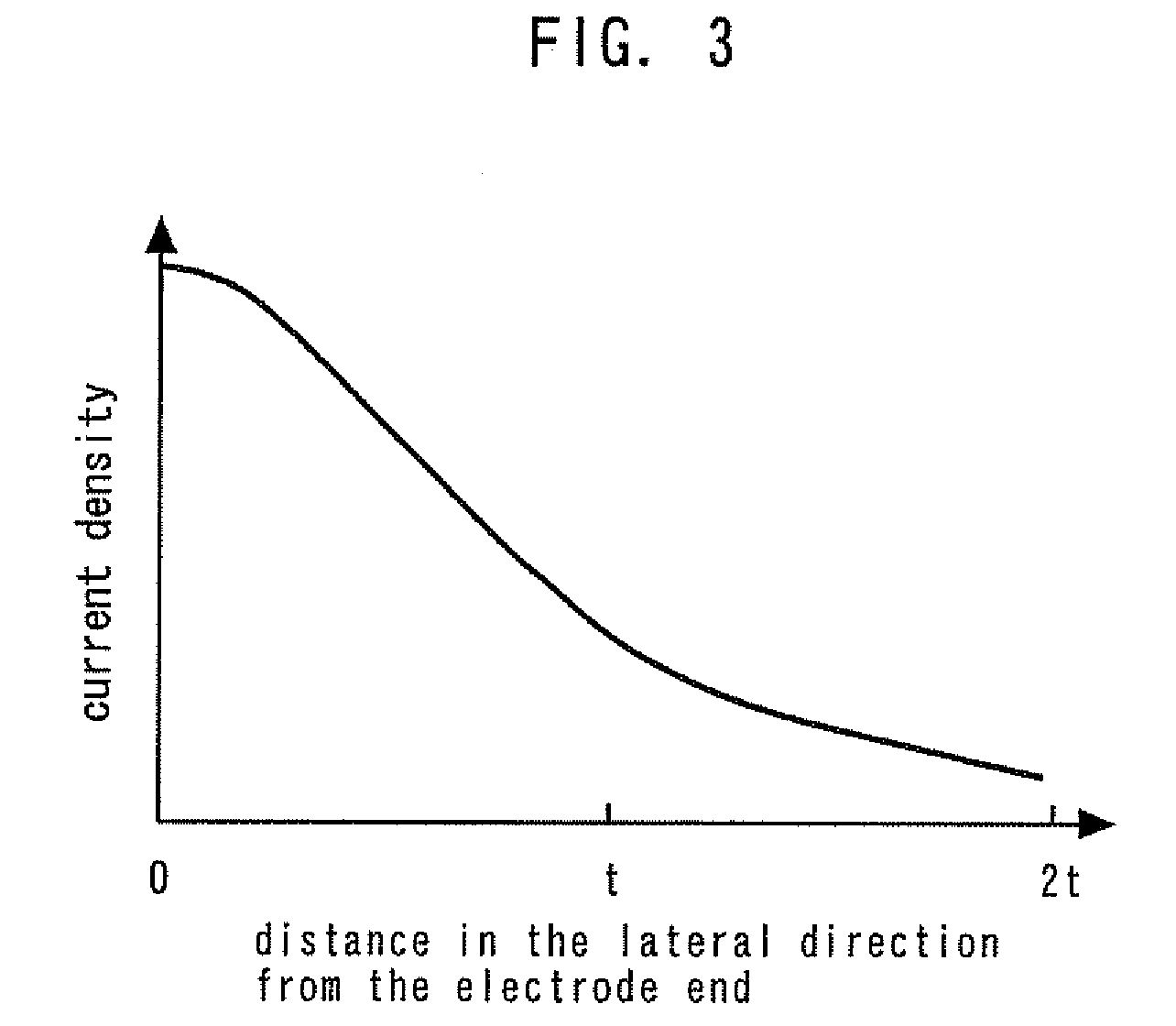Semiconductor light-emitting diode
a semiconductor and light-emitting diode technology, applied in the direction of semiconductor devices, basic electric elements, electrical appliances, etc., can solve the problems of lowering the light-emitting efficiency, difficulty in uniform current supply, and low current quantity, and achieve the effect of high light-emitting efficiency and increasing the efficiency of light extraction
- Summary
- Abstract
- Description
- Claims
- Application Information
AI Technical Summary
Benefits of technology
Problems solved by technology
Method used
Image
Examples
first embodiment
[0023]FIG. 1 is a sectional view showing a semiconductor light-emitting diode according to a first embodiment of the present invention. A GaN substrate 1 is a conductive substrate light transmissive to light-emitting wavelengths, and the thickness thereof is made to be 99 μm by polishing. On the GaN substrate 1, as semiconductor layers, an n-type AlGaN clad layer 2 having a thickness of 1.0 μm and an Al composition ratio of 0.07; a light-emitting layer 3 composed of four InGaN barrier layers each having a thickness of 7 nm and an In composition ratio of 0.02 not shown and three InGaN well layers each having a thickness of 5 nm and an In composition ratio of 0.10; a p-type AlGaN clad layer 4 having a thickness of 100 nm and an Al composition ratio of 0.07; and a p-type GaN contact layer Shaving a thickness of 20 nm are laminated.
[0024]A p-electrode 7 (principal-surface electrode) composed of Pd / Au is formed on the substantially entire surface of the GaN contact layer 5, and an n-elec...
second embodiment
[0035]FIG. 4 is a diagram of a semiconductor light-emitting diode according to the second embodiment of the present invention when viewing from the back face. The size of the element is 400 μm×400 μm. The n-electrode 6 is comb-shaped, the width of the n-electrode 6 is 15 μm, and the width L of an opening is 150 μm. The size of the electrode pad 10 is 50 μm×50 μm, and the size of the SiO2 insulating film 9 is 60 μm×60 μm. Since the laminate structure of the element is the same as in the first embodiment, the description thereof will be omitted.
[0036]In the second embodiment, L=1.5 t, and the proportion of the area of the n-electrode 6 to the area of the rear surf ace of the substrate 1 is about 13%. As a result, the light emitting wavelength at 20 mA is 408 mm, and the external quantum efficiency is 38%, which means that a very high light emitting efficiency can be obtained.
third embodiment
[0037]FIG. 5 is a diagram of a semiconductor light-emitting diode according to the third embodiment of the present invention when viewing from the back face. The size of the element is 400 μm×400 μm. The n-electrode 6 is net-shaped, the width of the n-electrode 6 is 20 μm, and the width L of an opening is 100 μm. The size of the electrode pad 10 is 50 μm×50 μm, and the size of the SiO2 insulating film 9 is 60 μm×60 μm. Since the laminate structure of the element is the same as in the first embodiment, the description thereof will be omitted.
[0038]In the third embodiment, L=1.0 t, and the proportion of the area of the n-electrode 6 to the area of the rear surface of the substrate 1 is about 34%. As a result, the light emitting wavelength at 20 mA is 408 mm, and the external quantum efficiency is 31%, which means that a very high light emitting efficiency can be obtained.
[0039]In the above-described first to third embodiments, the cases wherein the n-electrodes 6 were a comb shaped or...
PUM
 Login to View More
Login to View More Abstract
Description
Claims
Application Information
 Login to View More
Login to View More - R&D
- Intellectual Property
- Life Sciences
- Materials
- Tech Scout
- Unparalleled Data Quality
- Higher Quality Content
- 60% Fewer Hallucinations
Browse by: Latest US Patents, China's latest patents, Technical Efficacy Thesaurus, Application Domain, Technology Topic, Popular Technical Reports.
© 2025 PatSnap. All rights reserved.Legal|Privacy policy|Modern Slavery Act Transparency Statement|Sitemap|About US| Contact US: help@patsnap.com



